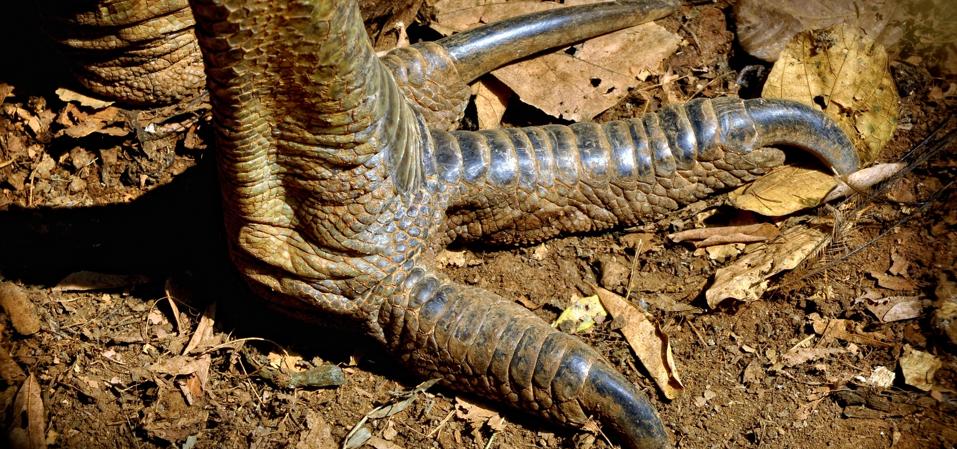When we think of flightless birds, aggressive is probably not the word that comes to mind.
We might think of a peacock calmly roaming the perimeter of a zoo (peacocks, however, aren’t true flightless birds – they are capable of flying for short distances). We might think of the unfortunate dodo of Mauritius. This was a bird so docile and unafraid of environmental threats it was hunted out of existence in less than 100 years.
Or, we might think of the ostrich. The ostrich, the world’s biggest flightless bird, does pose some threat to humans. There are documented cases of people being kicked by the ostrich’s powerful legs, resulting in serious injuries.
But the bird we really need to be careful around – assuming you live in northern Australia or the New Guinea region – is the cassowary. Here’s its story and why it can be so dangerous to humans.
The Flightless Cassowary – A Force To Be Reckoned With
The cassowary is a bird that looks like it stepped out of the Cretaceous period. Standing up to six feet tall and weighing as much as 130 pounds, it is undoubtedly an imposing figure.
Its glossy black feathers resemble a coarse cloak. On top of its head rests a helmet-like casque – a keratin structure whose exact function remains debated. Some biologists suggest it helps with navigating dense forest or amplifies the cassowary’s deep, rumbling calls.
Cassowaries are notoriously territorial, especially the females, who are larger and more aggressive than the males. They defend their domain fiercely and are not afraid to charge when they feel threatened.
The real danger lies in their legs. Each foot has three toes, the inner one armed with a dagger-like claw up to five inches long. These claws aren’t just for show, they are powerful weapons, capable of inflicting deep gashes or even fatal injuries.
There are numerous documented cases of cassowaries attacking humans. The most infamous incident occurred in 1926, when a 16-year-old boy was reportedly killed by a cassowary after attempting to club it.
While fatal encounters are exceedingly rare, serious injuries are not. In Australia, wildlife officers have had to develop protocols for safely managing these birds, particularly in areas where humans and cassowaries frequently cross paths.
(Sidebar: While few birds rival the cassowary’s power on land, one rules the skies. Meet the world’s strongest flying bird – it can, and does, attack humans too.)
It’s not just aggression that makes cassowaries stand out. It also their speed and agility. These birds can sprint up to 30 miles per hour and leap five feet into the air. They can swim well too, making them even more formidable in their dense rainforest habitat.
Why are they so aggressive? One theory points to their solitary nature and high parental investment. Female cassowaries lay eggs, but it’s the male who incubates them and raises the chicks alone. This solitary, protective behavior can translate into aggression when the bird feels cornered or surprised. In areas where cassowaries come into contact with humans – like trails, suburban edges or tourist sites – conflict can escalate quickly.
Conservationists stress that cassowaries are not villains. Their aggression is a natural defense mechanism. Furthermore, these birds play a critical role in their ecosystems by dispersing seeds of the plants they consume. Without cassowaries, some plant species might struggle to survive.
Respect, not fear, is the key. Keeping a safe distance and avoiding feeding or provoking them helps ensure peaceful coexistence.
Are you an animal lover who owns a pet? Take the science-backed Pet Personality Test to know how well you know your little friend.

